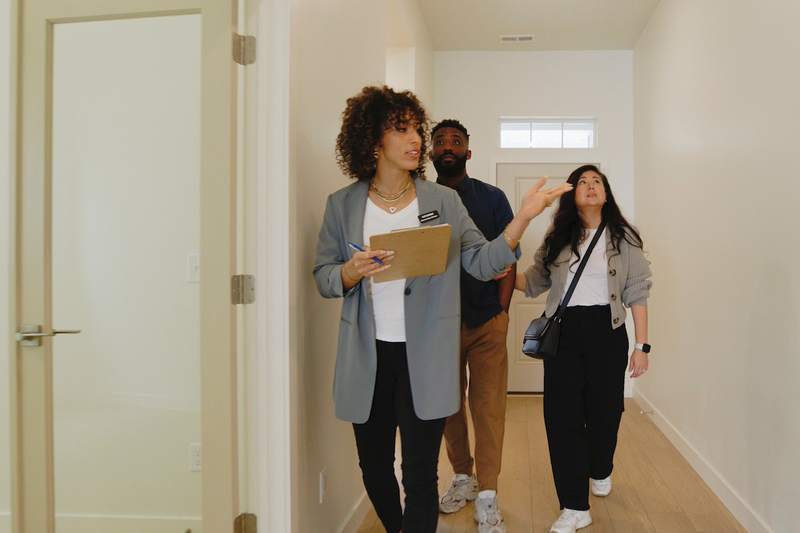Key Takeaways:
- Individuals who own or who are about to purchase a historic home may research its history using census records, deed history or information offered via local libraries or historical societies.
- Some homes may also be registered with the National Register of Historic Places.
- Municipalities could also be a source of information, offering data on old blueprints of homes or housing permits from previous construction or renovation projects.
How To Find History On A House
If you love historic homes and own or plan to purchase one, learning more about a home’s history, from when it was built to who lived in it to how the home was renovated, can be useful. Details about repairs, architectural and design changes and historical information can give you a better understanding of a home’s unique value. Here are five ways to find out the history of a home.
1. Registry Of Deeds
A registry of deeds contains official documents that establish property ownership. Generally preserved by county officials or public officers, these documents can be accessed by the public to gain information regarding property deeds, mortgages, real estate contracts and other property documents.
You can check out your local registrar’s website or visit a local building department’s office to look up your property’s deed. A deed can help you find not only the names of homeowners, but also construction dates, plot maps and changes in value and use of the home.
2. Census Record
A census record can reveal interesting details about individuals who lived at a home long before you did. If you want to find the previous owners of a house, this should be your first stop. You can learn the names, ages, birth states, years of immigration and even the occupations of past owners of the house. But, for privacy reasons, you’ll only be able to find information from before the year of 1950 – unless it’s about yourself or your direct ancestor. The extent of information you find will also depend on the specific year, as some years don’t include certain details.
3. Conduct A Permit And Blueprint Search
If you are considering making changes to your home, especially if it is historic, you may want to conduct a permit and blueprint search via your local municipality. The building department of most locales will keep these permits and blueprints (if available) on file. The length of time these items are kept by a village, town or city will vary, but if a home is historic, they will likely be archived.
Searching for building permits allows potential homeowners to discover when renovations or improvements were completed. You may be able to search by either visiting your local building department or requesting materials, or checking to see if your locale or county keeps a database of building permits, inspections and other materials.
One thing to consider: Some blueprints of homes are proprietary, especially those involving changes designed by architects, and may not be available for public viewing. However, in some locales, if you are making changes to a private historic residence, the information is presented to a town or city historic review board, which might also be a place to look for information on an older home.
4. Local Libraries And Historical Societies
In this technological age, it’s easy to overlook the value of paper trails. However, a local library or historical society may be a great place to learn more about the history of a home.
Historical societies are organizations that aim to preserve the history of a region, period or subject. Chances are you’ll find local gems such as these with collections of artifacts, books, newspapers, maps, photographs and records that offer fascinating insights into homes. Perhaps you’ll even discover that a noteworthy historic event was held near your home.
You may also be able to see how the appearance of a home has changed over the years. Ask your local town, city or county historic board about archival photographs of historical neighborhoods.
5. Ask Current Homeowners
Why not consider asking the current and previous homeowners what they know about the home’s history? You may be pleasantly surprised at what they know and are willing to share. Maybe they have old photos of the home or can regale you with precious memories from their time living there. And if you can’t track down any homeowners, you could also try kindly asking neighbors. Some may have been in the neighborhood for decades and can provide a wealth of knowledge and maybe even photographs.
What’s Your Goal?
Buy A Home
Discover mortgage options that fit your unique financial needs.

Refinance
Refinance your mortgage to have more money for what matters.
Tap Into Equity
Use your home’s equity and unlock cash to achieve your goals.
The Bottom Line: Completing Your House History Search
Learning about the past can add value to the present and future. Compiling a home history report can help you to grasp the history of a prospective home before deciding to buy it. By using resources such as public records, historical archives and the knowledge of past homeowners, you can feel more confident about the home you choose. But first, make sure to learn more about the essential steps to buying a home.

Ben Shapiro
Ben Shapiro is an award-winning financial analyst with nearly a decade of experience working in corporate finance in big banks, small-to-medium-size businesses, and mortgage finance. His expertise includes strategic application of macroeconomic analysis, financial data analysis, financial forecasting and strategic scenario planning. For the past four years, he has focused on the mortgage industry, applying economics to forecasting and strategic decision-making at Quicken Loans. Ben earned a bachelor’s degree in business with a minor in economics from California State University, Northridge, graduating cum laude and with honors. He also served as an officer in an allied military for five years, responsible for the welfare of 300 soldiers and eight direct reports before age 25.












